Ventilation in the bathhouse: a review of traditional schemes and nuances of arrangement
The temperature background and high level of moisture in the bathhouse are favorable conditions for the settlement of all kinds of harmful microorganisms.These include bacteria, viruses, molds that destroy wood and the pulmonary system of bath lovers. Properly done ventilation in the bathhouse will eliminate the listed negativity. How to make it?
We will tell you everything about the rules for organizing ventilation systems designed for drying wet rooms. Using reliable information will help you develop and implement an impeccable ventilation project. The data presented for consideration is based on building codes and the practical experience of builders.
The article describes in detail the methods of constructing ventilation systems designed to remove water suspended in the air, drying finishes and load-bearing structures. The materials and components required for their arrangement are described. Photo applications and video tutorials will provide effective assistance in mastering a difficult topic.
The content of the article:
Specifics of ventilation systems for baths
The bathhouse needs regular air renewal. This is a safety requirement for people taking bath procedures. Also, proper ventilation can extend the service life to 50 years or more.
The type of ventilation system is selected individually and depends on the location, size of the structure, and materials used in construction.
Bath ventilation schemes
All existing ventilation systems according to their operating principle are divided into natural, forced and combined.In the first case, ventilation occurs due to the random intake of street air, its mixing in the room and the displacement of exhaust air through the holes in a natural way.
Secondly, an additional device – a fan – is switched on. Most often it is installed on the hood, but it can also be installed on the inflow. A fan is used in each room of the bathhouse. In the third there is a symbiosis of the first and second options.
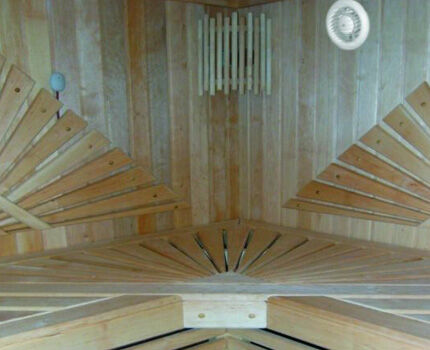
Among the ventilation schemes used in baths, bastu is the most popular. It involves the installation of an inflow hole with an adjustable valve, which is located behind/under the stove. Additionally, there may be vents under the stove controlled by a valve or slide. Air from the underground enters through them, penetrating from the street through vents in the foundation.
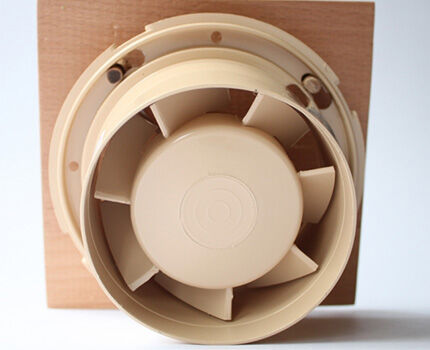
The upper opening of this box is closed until the required time. As soon as there is a need to dry the room, open 2 exhaust valves at once.
This seemingly ideal scheme is not always suitable. Then a forced ventilation option is used. If you add an exhaust fan to this circuit in the lower part at the entrance to the ventilation duct, you will get an exhaust system. When installing a fan in the supply opening behind/above the stove, we obtain a supply ventilation circuit for the steam room.
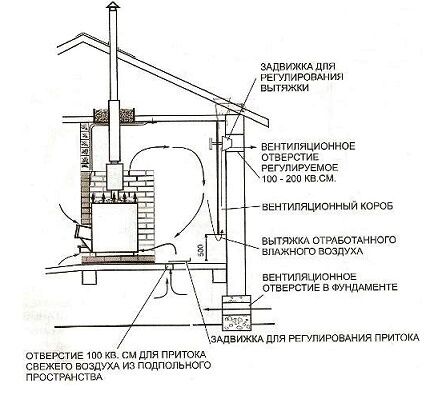
Another one ventilation diagram, used in baths, when the influx occurs through vents located in the lower part of the room, next to the floor, and the removal occurs through an opening at the top with ventilation valves installed in them.
From the outside, these openings are connected by a common ventilation duct that rises to a certain height. The height of the lower exhaust valve is about 50-60 cm from the floor, and the upper one is 30-40 cm from the ceiling.
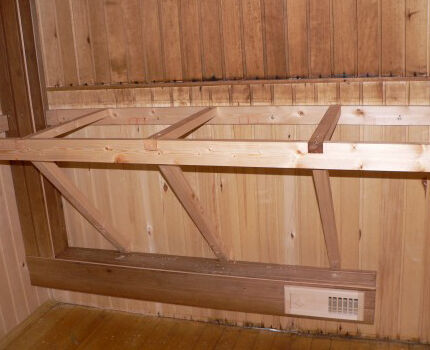
A ventilation scheme, which involves one channel for inflow and one for removal of air masses, is also used in baths. Moreover, these 2 holes are located at the same height from the floor. The first is behind the stove, and the second is on the opposite wall. It is imperative to install an exhaust fan here for the ventilation system to work.
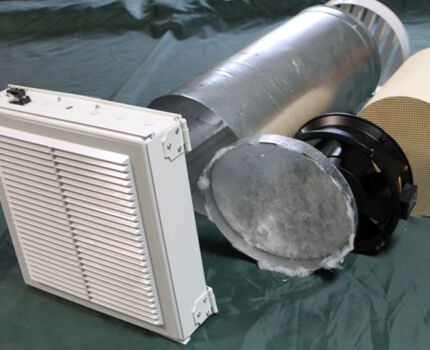
The worst option is when the supply and exhaust are located on the same wall, just opposite the stove. Unfortunately, such a picture is also not uncommon when other schemes cannot be applied in specific conditions.
With this scheme, fresh air, entering the room, seeks a path to the stove, simultaneously bumping into the feet of those steaming. Then, once in the right place and heated up, it rises up, mixes with steam and flies out into a hole located 20-30 cm from the ceiling.It does not have time to fully work, having been sufficiently saturated with carbon dioxide.
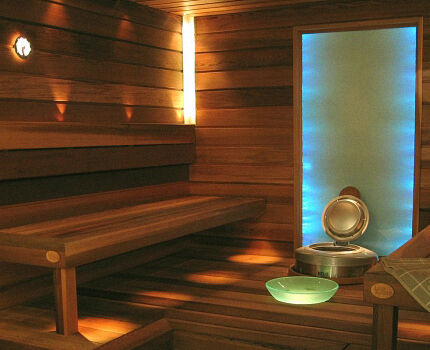
Structural components of the system
In the bathhouse, ventilation is necessary for the safety of people and to ensure acceptable operating conditions for the materials in the room itself. The development and installation of a ventilation system does not mean that you have to spend a lot of money on the implementation of projects that no one needs.
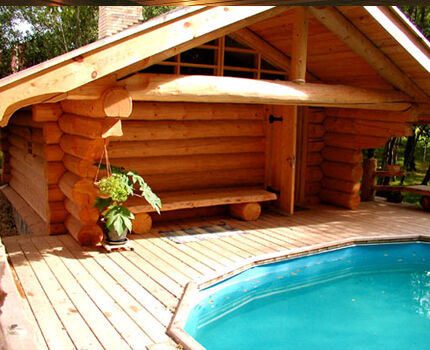
High-quality ventilation implemented in a bath includes airing and drying:
- all premises;
- wall structures;
- drying floors;
- ventilation of the attic and under-roof space.
Special windows, soffits, or aerators are installed as ventilation holes in the attic - it all depends on the type of roof and materials. Drying of the roofing pie is ensured by installing ventilation of the under-roof space.
If there is insulation, then a counter-lattice must be installed to ensure ventilation between the insulation and other layers of the roof. It is also used to ventilate wall structures so that condensation does not form in the thickness of the layers.
To dry floors, use burst ventilation or install a ventilated floor. This option should be considered during the construction phase. To do this, a rough floor is made by carefully pouring concrete on a slope, and the finishing floor is laid from hardwood boards, leaving small gaps between them. This flooring ensures rapid removal of excess moisture.
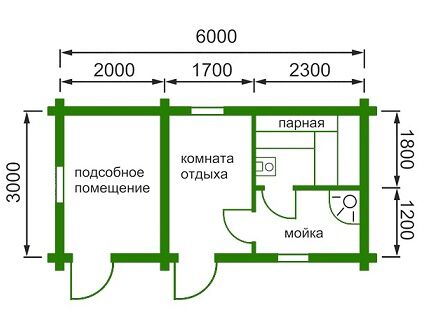
- steam room;
- washing room;
- dressing room/rest room;
- other premises.
To arrange proper ventilation, you have to choose the optimal scheme that suits the requirements and conditions of a particular bath. It is important to remember that fresh air must enter and be removed from all rooms.
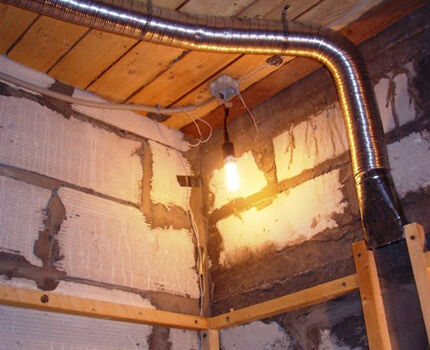
Experienced craftsmen do not recommend laying complex ventilation duct systems, preferring to focus on the simplest solution suitable for a particular case. The rule here is that the simpler the better. And in terms of price, the simple option will cost several times less.
Owners of Finnish saunas and bath complexes with two or more types of steam rooms, including an oriental hammam, are advised to familiarize themselves with the specifics sauna ventilation devices, described in detail in the proposed article.
Dependence of ventilation on the material of the bath walls
The ventilation system for a bathhouse directly depends on the type of room itself and the material from which it was built. This may be a separate building or several rooms in a long-built house. The first option is preferable - here it is convenient to plan and arrange a ventilation system, choosing the most inexpensive method.
If the bathhouse is adjacent to living quarters, special attention should be paid to drying it in order to protect the walls of the house from rotting. Also, do not forget that the temperature in the steam room will be high, so the adjacent walls must be additionally made heat-resistant.
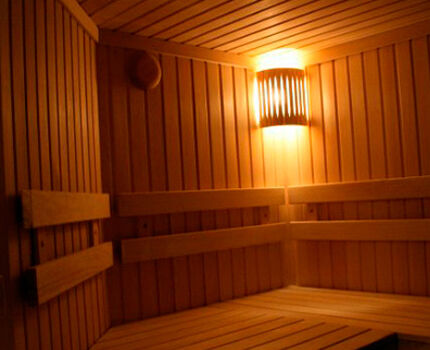
In this case, the ventilation system will only be forced. It must take into account the safety of the walls and supporting structures of a residential building. The ventilation system of such a bathhouse will be part of the system of the entire house. Ventilation ducts can be connected to common building ducts or separately go to the roof or through a wall to the street.
Depending on the type of material, baths are:
- made of brick;
- logs;
- from gas blocks;
- timber;
- wooden frame with insulation.
In brick and frame baths, ventilation ducts can be installed in the walls, leading them to the roof or higher.For inflow, an air duct is laid, a ventilation valve or vents are used in the foundation. Be sure to install an exhaust fan to better remove exhaust air.
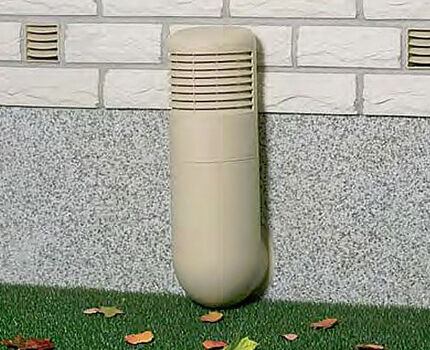
Due to the peculiarities of the wall material, bathhouses made of aerated blocks are equipped with galvanized air ducts, purchasing ready-made pipes. Sometimes a ventilation duct is made from galvanized sheets, giving them the appropriate shape and reliably sealing all joints. The ducts must run over the wall.
If logs are used as the material, then natural supply ventilation is possible due to the characteristics of the wood and construction technology. When the wood breathes, there are the necessary gaps between the logs, windows are provided in all rooms of the bathhouse, gaps from the floor to the bottom edge of the door are 2-3 cm, the construction of additional ventilation channels may not be necessary.
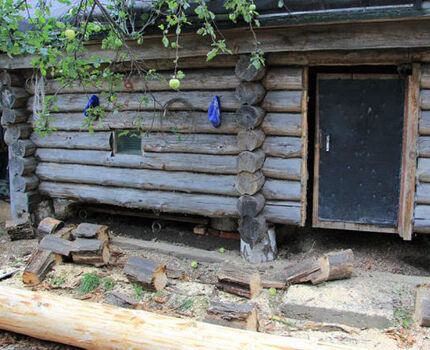
But achieving the optimal ratio between incoming air and outgoing steam can be very difficult. To avoid drafts and not heat the entire street, they often prefer to additionally insulate a wooden bathhouse by arranging holes inside with valves for air removal/intake.
Features of the ventilation system design
A big role in choosing the optimal ventilation scheme is played by the material of the bathhouse, its location, whether it is free-standing or not. All this helps to make the right decision when installing a venous system.
One of the effective methods of ventilation is burst ventilation - when you need to quickly ventilate everything, all doors and windows are opened. Of course, this can be implemented if there are windows.
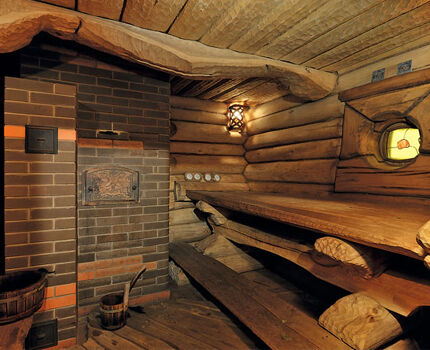
Participating in the ventilation of the bath are:
- window;
- vents in the foundation;
- special holes in the wall/ceiling;
- doors and the gap under them.
The solution to installing a window in the steam room is very good, but another thing is that it is not always possible to implement it. It is in such cases that it is necessary to choose another option for organizing the ventilation of the room.
It is also not often possible to use vents in the foundation. Especially if the owner decided to allocate one of the rooms of the house for a steam room, the foundation of which is not equipped with special holes. This is where it comes to the rescue forced ventilation with a carefully selected arrangement of supply and exhaust openings.
No matter how much you would like to protect the room from steam leakage by carefully covering it with vapor-proof materials and tightly fitting the doors, you should not do this. Under the door to the steam room you should definitely leave a gap of 2-3 cm and nothing else.
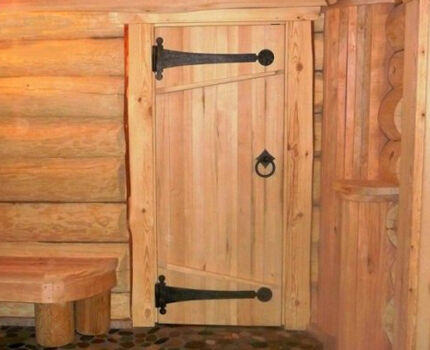
For air flow, it is advisable to make holes in the lower part of the room, connecting to the street. After all, the room needs clean and fresh air, especially if the bathhouse is located outside the city near a coniferous or deciduous forest.
Holes designed to remove exhaust air are located in the upper part of the walls opposite the walls with supply valves. Moreover, their height depends on the chosen ventilation scheme and starts from 80 cm from the floor level or more. It is also possible to install an exhaust valve in the ceiling with the ventilation duct leading to the roof.
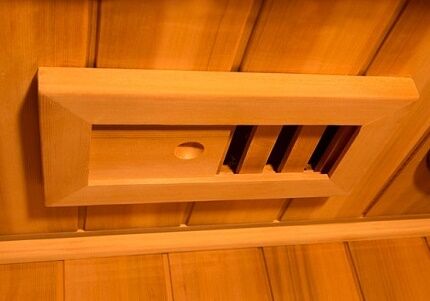
Accessories for ventilation construction
To create favorable conditions in the steam room of the bathhouse and in all additional rooms, it is necessary to properly arrange the ventilation system. Otherwise, there can be no talk of any comfort.
The components used for the ventilation device are as follows:
- ventilation valve;
- valve;
- lattice;
- anti-mosquito/protective net;
- ventilation duct;
- galvanized or corrugated air duct;
- fan;
- hygrometer, thermometer;
- metal tape, clamp, polyurethane foam, sealant, fasteners and other consumables for installation and design of inlet and outlet openings.
Ventilation valves for ventilation in the bathhouse are placed on the supply and exhaust openings. They come in different sizes, shapes and materials. Therefore, it will not be difficult to choose a valve that perfectly matches the color.
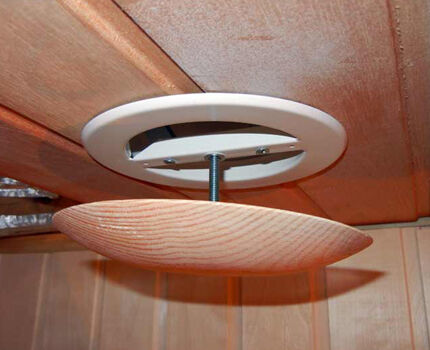
Gate valves are also available in various designs. They are needed to open/close holes if necessary. Often, home craftsmen make a homemade design that copes just as well with the function of removing/influxing air masses from the premises.
The grille and mesh are needed to protect the ventilation hole from rodents, moths, mosquitoes and other living creatures getting inside.The gratings are chosen from wood, heat-resistant plastic, and the mesh is most often made of metal.
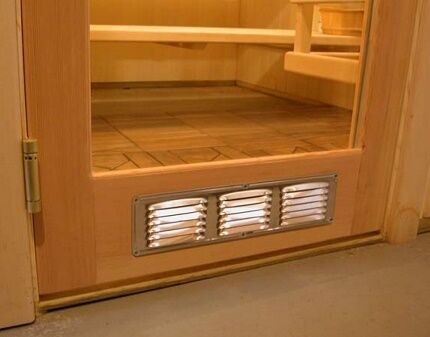
The ventilation duct is installed in a wall niche or, if conditions do not allow, laid on top, for example, if aerated concrete is used as the wall material. The box can be made from scrap materials or a corrugated or galvanized pipe can be used as an air duct. Plastic analogues are not suitable for a steam room - you need to take into account the temperature to which the room will heat up.
The fan in the bathhouse is used for both supply and exhaust. It is considered optimal to use it in only one direction - for the influx or removal of air masses.
You need to buy a heat-resistant device, specifically designed for baths and saunas with IP 44 and above. Do not forget about the specifics of the room - there is a lot of steam and high temperature.
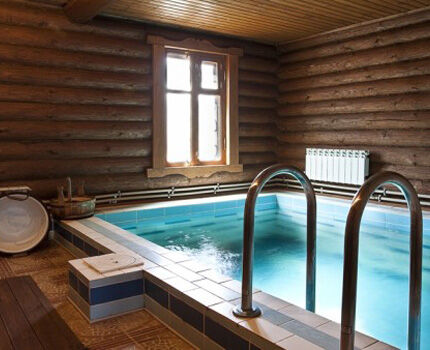
Consumables are used during installation for fastening air ducts, arranging ventilation ducts and installing valves and fans. A hygrometer and thermometer are needed to effectively use the ventilation system.
If mechanical ventilation is installed using climate technology, then there is a built-in temperature sensor and a humidity level regulator. Based on the actual indicators of the devices, the system starts the exhaust fan or opens the supply valve.
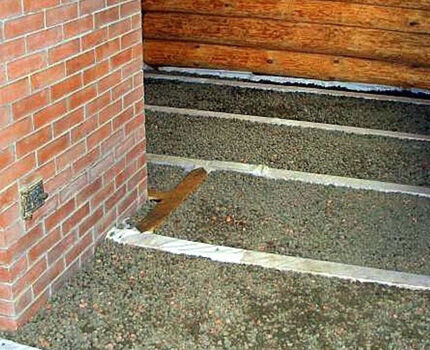
Properly equipped ventilation will ensure a comfortable stay in all rooms of the bathhouse, unclouded by extraneous odors and drops of water flowing down the walls and falling down the collar from the ceiling.
Another important condition for a long service life is timely and complete drying after use. It is on the implementation of this point that it depends how long the bathhouse will last and whether the rotten boards will need to be replaced with new ones in the next 3-5 years.
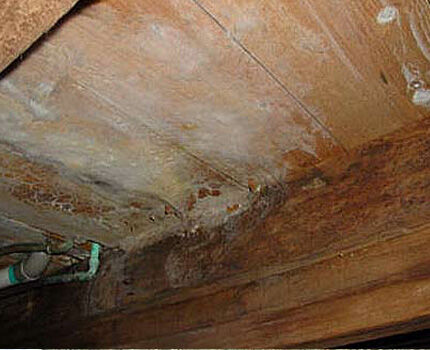
Conclusions and useful video on the topic
Effective schemes for organizing ventilation in a steam room:
Ventilation options for a new bathhouse:
The free-standing bathhouse provides ventilation for all interior spaces and the attic. There are also vents in the foundation, and a fan is used to improve air exchange between the steam room and the relaxation room - all this can be seen in the video:
The lack of ventilation ducts in a bathhouse can result in costly troubles:
For rational and long-term use of the bathhouse, it is important to properly arrange its ventilation system. It is necessary to select the most appropriate option, suitable for specific conditions, capable of providing fresh air inflow and removal of exhaust air in the required volume. If it’s dry in a non-working bathhouse, but comfortable in a heated one and nothing drips on your head, then you managed to cope with the ventilation problem perfectly.
Do you have any questions while reading the information provided? Would you like to talk about the nuances of organizing ventilation in a bathhouse known only to you? Please write comments in the block below, post thematic photos, and share your impressions.




Correct installation of the ventilation system in the bathhouse is the key to the fact that it will help the structures last longer and create a suitable microclimate for procedures. Of course, a natural system is the cheapest option, but it will not provide sufficient air circulation in the room. I think it is necessary to install a fan. Moreover, now there is a huge selection of them, you can find completely silent ones, you won’t even pay attention to them. And of course, do not forget to ventilate all rooms of the bathhouse, regardless of the presence or absence of a fan.
We have our own plot of land outside the city. Two years ago we built a bathhouse ourselves. We consulted with experts. The design of the bathhouse was thought out very carefully, especially the ventilation system. So far we can say that we coped with our task “perfectly.” Steaming in the sauna is quite comfortable. Neither mold nor mildew grows. We maintain the condition at the proper level.
The article is about nothing, just water. There is not a single example on how to make ventilation. Everything is just about what needs to be done, but this is clear even without the article. Most bathhouses are log or lumber 5x5 or 6x6 or even smaller, so we would describe the ventilation using this example. And then everything is around the bush. I didn’t like the article, that’s not what it was about.